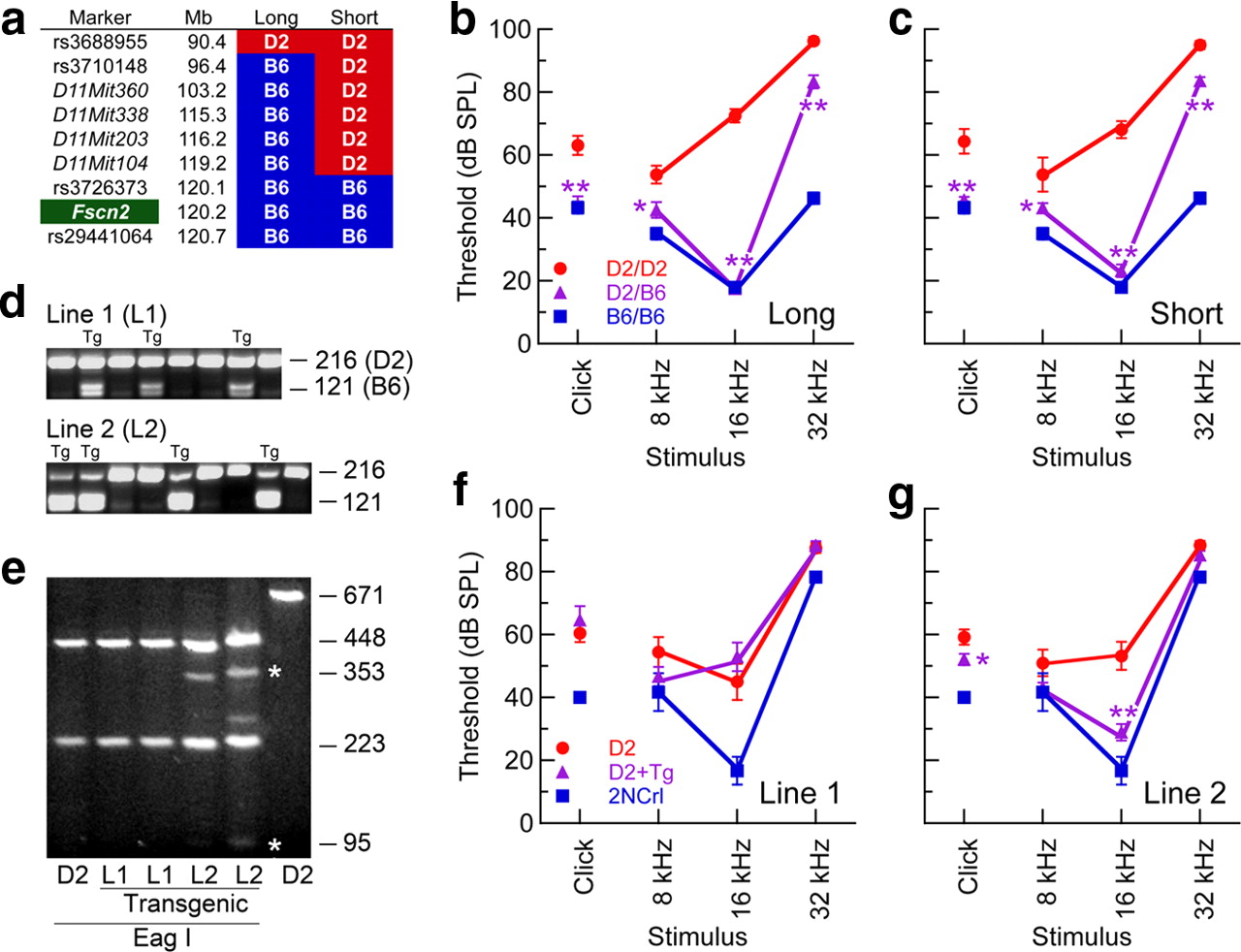XB-IMG-144754
Xenbase Image ID: 144754

|
Figure 4.
The wild-type C57BL/6J (B6) allele of Fscn2 rescues hearing loss in congenic and transgenic lines of DBA/2J (D2) mice. a , Markers defining the B6-derived distal Chr 11 regions for each of the two D2.B6 congenic lines, designated long (congenic region ∼26 Mb) and short (congenic region ∼3 Mb). b , c , ABR threshold means and SEs for heterozygous D2.B6 congenic line mice (D2/B6; long n = 8, short n = 8) and littermate D2 mice (D2/D2; long n = 6, short n = 14), tested at 2 months of age. Statistically significant ABR threshold differences between B6/D2 and D2/D2 mice are marked by asterisks: *p < 0.05; **p < 0.001. ABR thresholds of age-matched B6 mice (B6/B6; n = 20) are shown for comparison. d , Fscn2 transgene integration. The D2 mutation of Fscn2 ablates an EagI restriction site that is present in the wild-type B6 allele, allowing detection of B6-derived Fscn2 transgenes. After treatment with EagI, Fscn2 PCR products of genomic DNA from mice with B6-derived transgenes include a diagnostic 121 bp fragment. The abundance of this B6-specific fragment, relative to the 216 bp endogenous D2 fragment, is much lower in line 1 than in line 2 transgenic mice. e , Fscn2 transgene expression. PCR primers specific to exons 1 and 2 of Fscn2 were used to amplify a 671 bp product from cDNAs derived from brain and inner ear RNA. After digestion of this product with EagI, diagnostic B6-specific fragments of 353 and 95 bp could be detected in line 2 (L2) transgenic mice, but not in line 1 (L1) transgenic mice, which showed only the 448 and 223 bp fragments of D2 mice. f , g , ABR threshold means and SEs of DBA/2J mice with B6-derived Fscn2 transgenes (D2+Tg; line 1 n = 12; line 2 n = 19) and their nontransgenic littermates (D2; line 1 n = 10, line 2 n = 20), tested at 1 month of age. ABR thresholds of age-matched DBA/2NCrl control mice (2NCrl; n = 3) are shown for comparisons. Statistically significant ABR threshold differences between D2+Tg and D2 mice are marked by asterisks: *p < 0.05; **p < 0.001. Image published in: Shin JB et al. (2010) Copyright © 2010. This image is reproduced with permission of the publisher and the copyright holder. This is an Open Access article distributed under the terms of the Creative Commons Attribution License. Larger Image Printer Friendly View |
